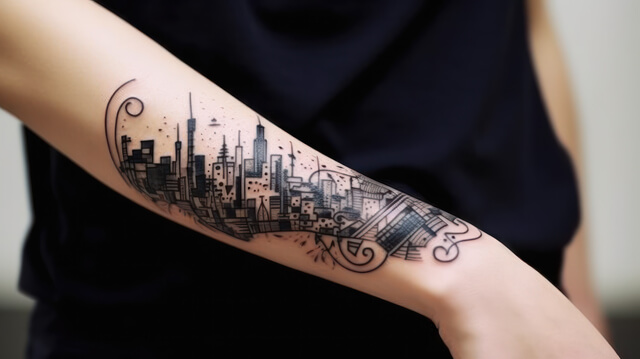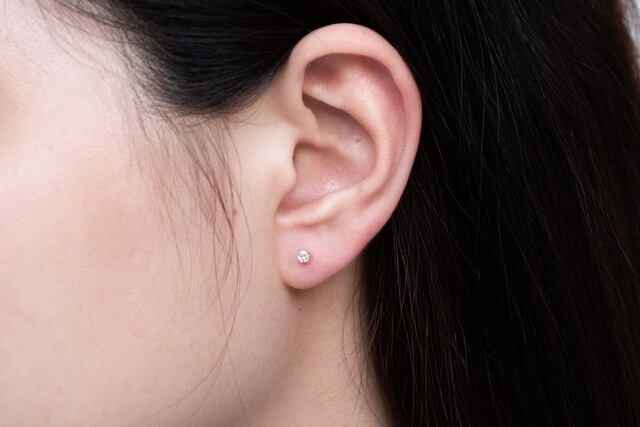Tattoos and piercings are methods of body modification that create lacerations in the skin or flesh. They are wounds that come with their own periods of downtime, needing proper care and maintenance to fully heal and minimize the appearance of unsightly scars, bumps or reactions. During these crucial stages, much patience is needed. By educating yourself on what your body is going through, you can help it work towards the best possible outcome while being on guard for signs of infections and complications.
Tattoos

Sensitivity, Redness and Swelling (1 – 3 Days)
Immediately after your tattoo has been completed, your tattoo artist will help you clean, treat and wrap up the affected area. From this period onwards, you would start feeling the effects of inflammation setting in. Your skin becomes red, swollen and tender, and you may realize clear fluid seeping from your tattoo. This is normal, being your body’s attempt to fight off infections and heal the wound with blood and plasma. Some colors from your tattoo may leak out as well, as your body expels any excess ink.
These effects should gradually improve over the next few days as you move on to the next stage of your recovery. It is important to avoid touching your tattoo or irritating the skin around it unless you are cleaning the area.
SIGNS
- Swelling
- Redness
- Oozing, occasionally accompanied by blood and excess ink
SYMPTOMS
- Soreness, tenderness and sensitivity
- Mild burning sensation (like a sunburn)
Scabbing, Peeling and Itching (2 – 3 Weeks)
As your epidermis (the topmost layer) of your skin heals, your tattoo gets itchy, peels and begins to flake. Strengthen your resolve to resist the urge to scratch, rub or pick at the scab as it forms and dries. Doing so may hamper your recovery, exposing you to the risk of infection and prolonging the time needed to get to your completed tattoo. Fiddling with the scab may also damage the tattoo, leading to scarring and patchy appearances.
You will know if this stage is coming to a close when your tattoo starts to peel, revealing the new skin here to replace its old and damaged layer.
SIGNS
- Peeling, flaking
- Scabbing
SYMPTOMS
- Itching
- Any pain from the tattoo procedure should resolve by now
Subsiding and Settling (3 Weeks – 1 Month)
Easing into the final stage of recovery, your remaining symptoms slowly but steadily subside. Your tattoo dries out and starts to visibly blend in with the rest of your skin, exfoliating dead skin cells as it settles into its final appearance. During this time, you may notice your tattoo looking more dull and faded than desired. Fret not, as the tattoo will assume its vibrance once it is fully healed.
While your tattoo may have healed superficially, consistent and long-term upkeep is needed at least for the next few months. Do note that in the dermis layer where the tattoo ink is deposited, skin remodeling continues for another 3 to 6 months for deep and total recovery.
SIGNS
- Shedding, revealing light and new skin
- Your tattoo may appear dull, discolored or faded
- Vibrance and color returns to your tattoo as it heals
SYMPTOMS
- Closing of wound, your tattoo starts to feel like normal skin
- Symptoms from your tattoo procedure should cease
Piercings

Soreness, Redness and Bleeding (1 – 3 Days)
Just like in tattoos, piercings trigger an instant inflammatory response targeted at the site of damage. Healing takes place, putting into effect discomfort in the form of soreness, swelling, and redness. These symptoms often come hand-in-hand with some bleeding or discharge, signs that your body is cleaning and protecting the wound. You may continue to experience sensitivity around the piercing in the initial stages of your recovery. Exercise care and hygiene when cleaning the wound, and avoid causing trauma to the damaged skin by touching it unnecessarily.
SIGNS
- Swelling, sensitivity
- Redness
SYMPTOMS
- Slight bleeding and oozing
Itching and Crusting (2 – 3 Weeks)
A fistula, a tunnel of healed scar tissue, starts to form within the piercing. Engaging in recovery, your wound may present with some crusting as a result of the discharge mentioned before. It may be itchy, but avoid touching or scratching it as it may exacerbate the condition of the affected area by irritating the skin. Doing this can also delay your healing. Clean the piercing regularly to prevent infections.
In some cases, bumps may form due to complications such as granulomas, keloids and tissue damage. As such, maintain the hygiene of your piercing diligently and watch out for signs that may indicate issues outside of normal recovery. Check in with your piercer or doctor if so.
SIGNS
- Crusting (drying of lymph fluid)
- Scabbing
SYMPTOMS
- Itching
- The piercing may feel dry or patchy
Subsiding and Movement (4 Weeks Onwards)
Moving on to the final stage of recovery, your piercing is almost complete. There is less oozing, crusting, and minimal to no sensitivity as your healing progresses, with the absence of new discharge. As your symptoms recede, you may feel that your piercing jewelry can move more freely, allowing rotations, twisting and turning without pain or discomfort.
While your wound seems to have healed on the surface, it is best to maintain proper aftercare as piercings go deep into the skin as well as the flesh. It is also crucial to note that different placements follow different timelines for healing, with the shortest being earlobe piercings, which can take up to a total of 8 weeks, and the longest being industrial piercings, which can take up to a total of 9 weeks. Hence, keep an eye on your piercings and take care of them to ensure they do not relapse, regressing any advancements you made through weeks or months of gentle, thorough and effective care.
SIGNS
- Decreased redness, swelling and crusting
SYMPTOMS
- Matured piercing sites allow for rotation and movement of jewelry
- Piercing is no longer as sensitive as before
Conclusion
Does the preparation, procedure and post-tattoo or piercing aftercare sound overwhelming to you? It is completely understandable to feel apprehensive about body modifications, and the planning and potential discomfort that go along with them. That is why it is in your best interest to seek out a professional, experienced and empathetic tattoo artist or piercer, who feels no hesitation in guiding you through the process with confidence.
At Ink by Finch, our artists are trained to be there with you every step of the way in your tattoo or piercing journey. From in-depth consultations, careful and precise applications, to comprehensive aftercare advice, Ink by Finch delivers the full experience to gain you the body art of your dreams with the least fear and the most ease.
Contact us here to book an appointment.